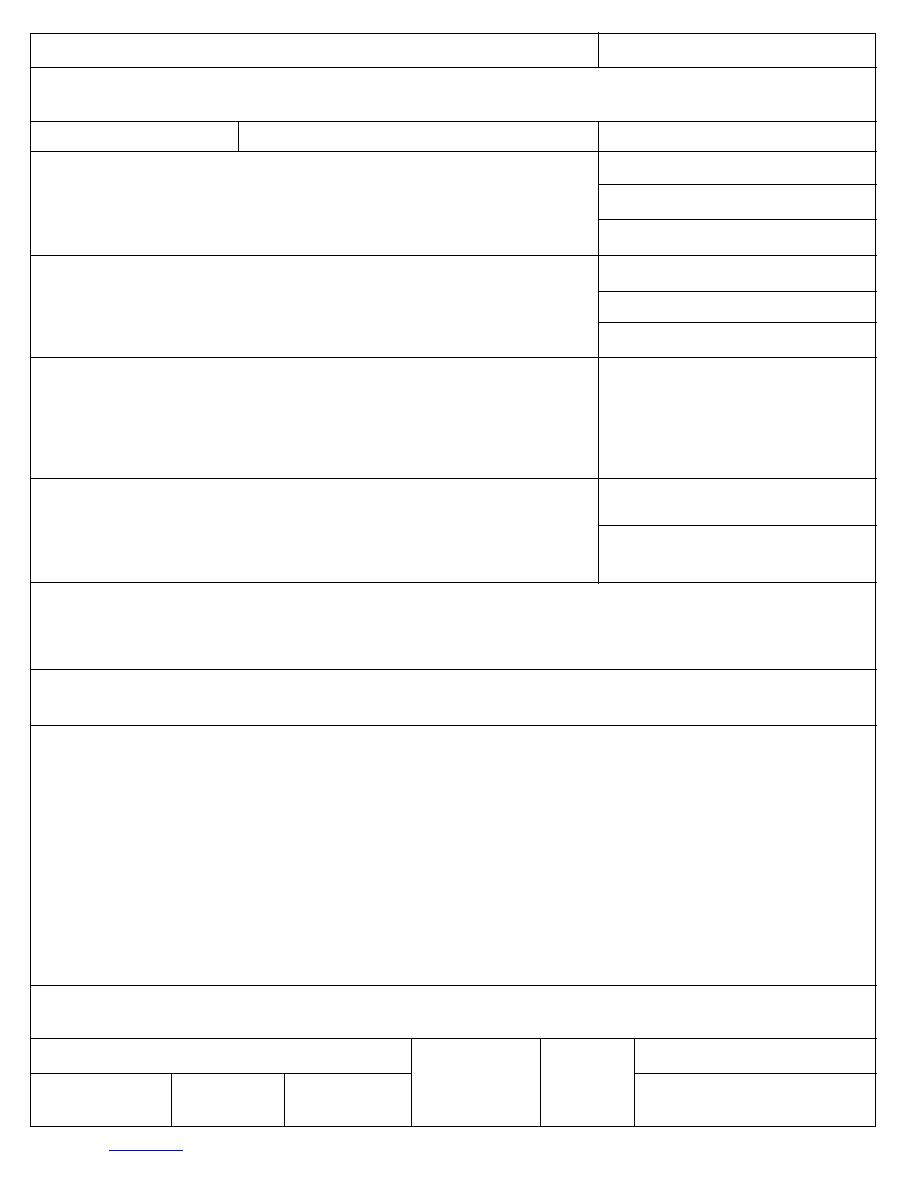
Form Approved
REPORT DOCUMENTATION PAGE
OMB No. 0704-0188
Public reporting burden for this collection of information is estimated to average 1 hour per response, including the time for reviewing instructions, searching existing data sources, gathering and maintaining the
data needed, and completing and reviewing this collection of information. Send comments regarding this burden estimate or any other aspect of this collection of information, including suggestions for reducing
this burden to Department of Defense, Washington Headquarters Services, Directorate for Information Operations and Reports (0704-0188), 1215 Jefferson Davis Highway, Suite 1204, Arlington, VA 22202-4302.
Respondents should be aware that notwithstanding any other provision of law, no person shall be subject to any penalty for failing to comply with a collection of information if it does not display a currently valid
OMB control number. PLEASE DO NOT RETURN YOUR FORM TO THE ABOVE ADDRESS.
1. REPORT DATE (DD-MM-YY)
2. REPORT TYPE
3. DATES COVERED (From - To)
January 2000
Monograph
4. TITLE AND SUBTITLE
5a. CONTRACT NUMBER
5b. GRANT NUMBER
Remote Sensing of In-Flight Icing Conditions:
Operational, Meteorological, and Technological Considerations
5c. PROGRAM ELEMENT NUMBER
6. AUTHOR(S)
5d. PROJECT NUMBER
Charles C. Ryerson
5e. TASK NUMBER
5f. WORK UNIT NUMBER
7. PERFORMING ORGANIZATION NAME(S) AND ADDRESS(ES)
8. PERFORMING ORGANIZATION REPORT
NUMBER
Engineer Research and Development Center
U.S. Army Cold Regions Research and Engineering Laboratory
72 Lyme Road
ERDC/CRREL M-00-1
Hanover, New Hampshire 03755-1290
9. SPONSORING/MONITORING AGENCY NAME(S) AND ADDRESS(ES)
10. SPONSOR / MONITOR'S ACRONYM(S)
National Aeronautics and Space Administration
11. SPONSOR / MONITOR'S REPORT
Washiington, D.C.
NUMBER(S)
12. DISTRIBUTION / AVAILABILITY STATEMENT
Approved for public release; distribution is unlimited.
Available from NTIS, Springfield, Virginia 22161.
13. SUPPLEMENTARY NOTES
14. ABSTRACT
Remote-sensing systems that map aircraft icing conditions in the flight path from airports or aircraft would allow icing to be avoided and
exited. Icing remote-sensing system development requires consideration of the operational environment, the meteorological environment,
and the technology available.
Operationally, pilots need unambiguous cockpit icing displays for risk management decision-making. Human factors, aircraft integra-
tion, integration of remotely sensed icing information into the weather system infrastructures, and avoid-and-exit issues need resolution.
Cost, maintenance, power, weight, and space concern manufacturers, operators, and regulators.
An icing remote-sensing system detects cloud and precipitation liquid water, drop size, and temperature. An algorithm is needed to
convert these conditions into icing potential estimates for cockpit display. Specification development requires that magnitudes of cloud
microphysical conditions and their spatial and temporal variability be understood at multiple scales.
The core of an icing remote-sensing system is the technology that senses icing microphysical conditions. Radar and microwave radiom-
eters penetrate clouds and can estimate liquid water and drop size. Retrieval development is needed; differential attenuation and neural
network assessment of multiple-band radar returns are most promising to date. Airport-based radar or radiometers are the most viable near-
term technologies. A radiometer that profiles cloud liquid water, and experimental techniques to use radiometers horizontally, are promising.
15. SUBJECT TERMS
Aircraft icing
Drop size
In-flight icing
Lidar
NASA
Radar
Temperatures
DoD
FAA
Human factors
Liquid water content
Operations
Remote sensing
16. SECURITY CLASSIFICATION OF:
17. LIMITATION OF
18. NUMBER
19a. NAME OF RESPONSIBLE PERSON
ABSTRACT
OF PAGES
a. REPORT
b. ABSTRACT
c. THIS PAGE
19b. TELEPHONE NUMBER (include area code)
U
U
U
U
75
Standard Form 298 (Rev. 8-98)
To Contents
Prescribed by ANSI Std. 239.18




 Previous Page
Previous Page
